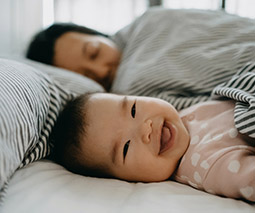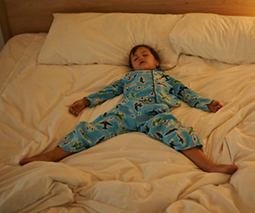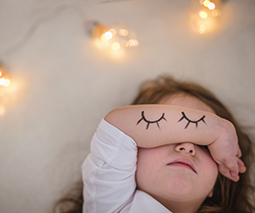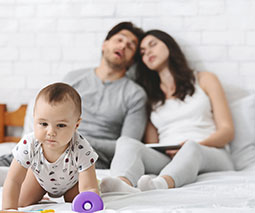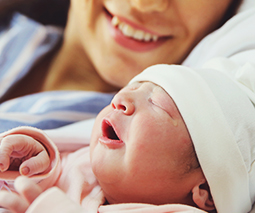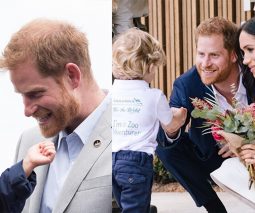How to stop the end of daylight saving from ruining your kid’s sleep
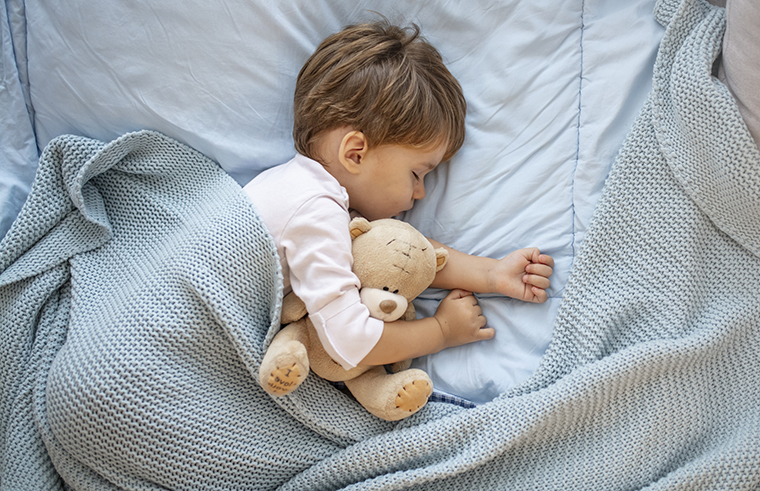
Sleep is not something any parent can take for granted, especially those of us with a baby or young child. With the end of daylight saving in sight, we have gathered some helpful tips for easing little ones into the change.
Clocks go back
Daylight saving will end in New South Wales, Victoria, South Australia, Tasmania, and the Australian Capital Territory on Sunday, April 4, when clocks are put back one hour at 3am. Queensland, the Northern Territory and Western Australia residents are not affected as they do not observe daylight saving time. But many of the tips below could be used by any parent hoping to transition their baby or child into new sleep times.
Why does it matter?
Personally, I knew the start of daylight saving would upset my son’s sleep patterns because it’s hard to enforce the same bedtime at night when the sun is still up. I never really considered the impact the end of daylight saving would have until his 6.30am wake-up time became 5.30am! That’s a whole hour of sleep everyone in our house definitely needed.
The Baby Sleep Site explains, “While we adults can process the time change and stay in bed until our normal wake-up time even after we “fall back”, your baby or young toddler can’t do this. The end of daylight saving time causes most children to wake earlier than usual, and that in turn throws off naps and bedtime, and this turns into a relentless cycle of overtired crankiness from which it can feel very difficult to escape.”
Here’s how to prepare young children …
Start early
To help your child ease into the time change, start making slight adjustments to their sleep times at least a few days before clocks go back. By moving the times for wake-ups, naps and bed by 10 to 15 minutes every day or every second day, you can gradually transition your child into the new routine. “For example, if your baby usually wakes at 6am, and you’d like to keep it that way, work towards having her get up closer to 7am and shift everything else ahead too,” The Baby Sleep Site suggests.
Save Our Sleep’s Tizzie Hall says the transition can even be done in just three days before daylight saving ends, the main point is to give our little ones some time to adjust. “Of course this may take a few days but the principle of slowly transitioning the baby or child rather than expecting them to cope all of a sudden applies. Within a week it all should be fine,” she writes.
Adjust your whole routine
Often with very young children, sleep and feeding times go hand-in-hand so keep this in mind. The time change will not just affect sleep routines but also feeds or meal times so it is a good idea to make the same gradual adjustments.
Check sleep environment
Bella Luna Sleep recommends changing things around in your child’s sleep environment to ensure it is dark when you want them to be asleep. So having blackout curtains in place to hide the early morning sun could help children to stay asleep or “fall back” to sleep until it is time to get up.
Be patient
Some children are more adaptable than others, so take it one step at a time, eventually the new routine will fall into place – hopefully before the first Sunday in October, when daylight saving returns!
Daylight saving ends Sunday, April 4 2021, where clocks will be turned backwards 1 hour at 3am.
This article was originally published on March 5, 2019.
